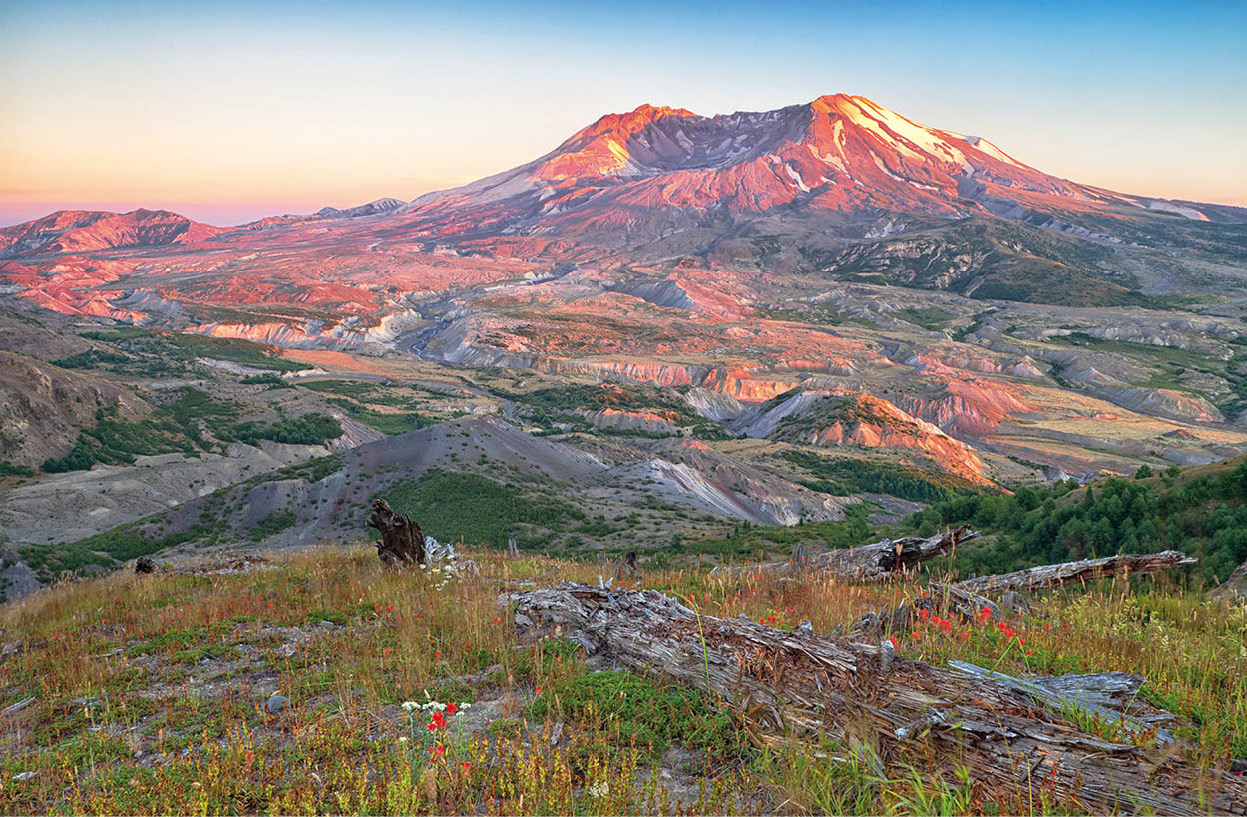Local tribal mythology tells the story of a pair of warriors, Wyeast and Pahto, who fought each other for the love of a beautiful maiden.
Their monumental battle involved earthquakes and firing volleys of rock and flames across the Columbia River. To settle the dispute, the gods transformed the warriors into mountains along the Cascade Chain: Wyeast became Mount Hood and Pahto became Mount Rainier.
Seattle sits on the Pacific Rim, where 850 active volcanoes in mountain ranges on all sides of the Pacific Ocean form a ‘Ring of Fire.’ This includes the Cascade Range, a 700-mile (1,130km) chain of mountains that runs north-south through the state of Washington. The most recent major volcanic eruption in the Cascades occurred in May 1980, when Mount St Helens gave a powerful demonstration of the natural forces that created much of the Northwest landscape. The eruption of ash and molten lava transfigured the hillsides and sent a gray cloud across the state. Repercussions were said to have been felt as far away as Europe.
As many as 60 people died, as well as 7,000 big game animals (deer, elk, and bear). Many small animals survived, however, because they were below ground level or the water surface.

Sunrise on Mount Rainier, the tallest mountain in Washington, rising a majestic 14,410ft (4,367 metres) above sea level.
Corbis
Mount St Helens Eruption